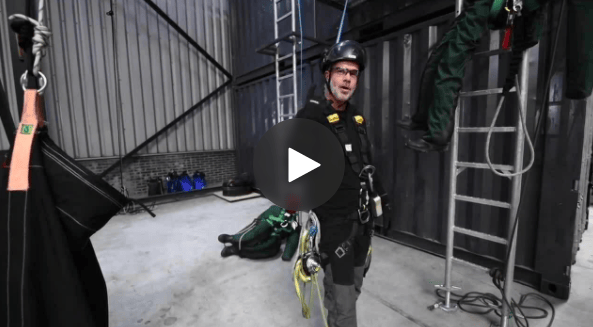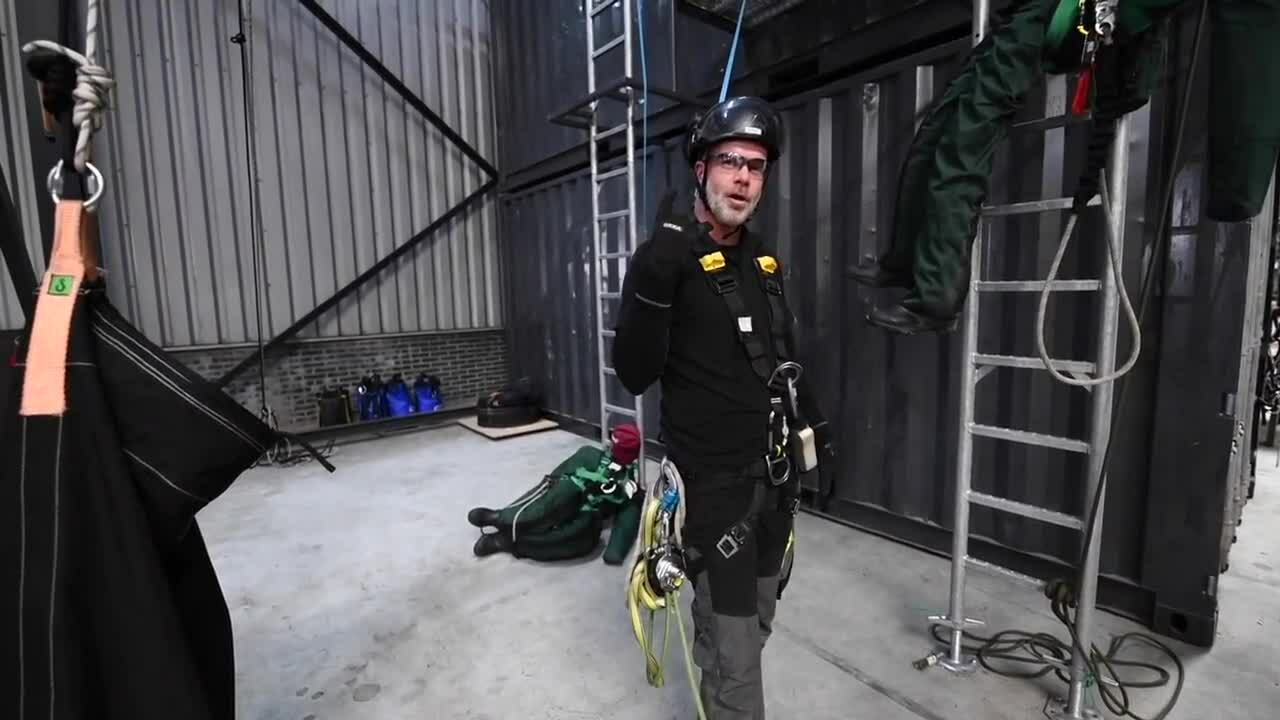Demonstration of evacuation and rescue from a wind turbine (vlog)
DELTA Safety Training is a dynamic company with a lot going on. Through a series of vlogs, we would like to give you an impression of how things work at our company. Today, Rolf gives a short demonstration.
Rolf has been a trainer at DELTA Safety Training for four years now. His focus is on wind (GWO), offshore oil and gas (OPITO, NOGEPA) and particularly working at height training. In a clear demonstration, he shows two critical parts of the training 'Working at height'.
Evacuation from the wind turbine
First, Rolf shows us how to evacuate a wind turbine. Usually, there is only one way up in a wind turbine, but the Working Conditions Act makes it compulsory to have a second way down safely. The wind turbine has a particular descent or evacuation device for this purpose. It lowers you down at a controlled speed. Rolf shows you how it works when you want to come down from the wind turbine as quickly as possible.
He describes how the person first lowers himself in a controlled manner. Then, when he is entirely free of the hatch, he lets go of the rope and the device does the rest of the work of lowering him down gently and safely. The device thus makes the descent much easier, but it is vital that it is used correctly!
Rescue from a wind turbine
Then Rolf shows us a demonstration of a rescue inside a wind turbine. This is of vital importance, because you depend on each other when a rescue turns out to be necessary. That is why it is so important to practise this a lot and to keep your skills up-to-date. A brief summary of an example of a wind turbine rescue is as follows:
When there is an incident with your colleague in the wind turbine, you check the victim's consciousness. You then follow the emergency procedure of the client or your employer. You indicate where you are and what is going on with your colleague. For instance, you say: 'I have an unconscious victim here in a harness, at the height of 20 to 30 metres'. You indicate that you are alone and are going to perform a rescue. Then you climb up to your colleague. You check again that your colleague is conscious and then hang up the rescue equipment. You then pull your colleague up a bit with the rescue equipment so that you can unhook his fall arrest device. You then have control over the victim. You then connect to the rescue device and remove your own fall protection. Finally, you switch on the device and supervise your own descent and that of the victim so that you both get down safely.
At the bottom, it is still essential to apply victim aftercare and hand the person over to the professional emergency services.
We would be happy to take care of your next safety training
Is it time to refresh your skills, or are you looking for a party that can help you get your first training and the necessary certifications? Feel free to contact us. We will be happy to tell you more about the possibilities!
Learn more about Rolf
We recently interviewed our enthusiastic trainer. Read the interview with trainer Rolf!
More information about DELTA Safety Training
View our training offer. Would you like a no-obligation consultation on a suitable training course? Or are you curious about which certificates are important in your work? Then contact us for a tailor-made training advice without any obligation by filling in the form below.

